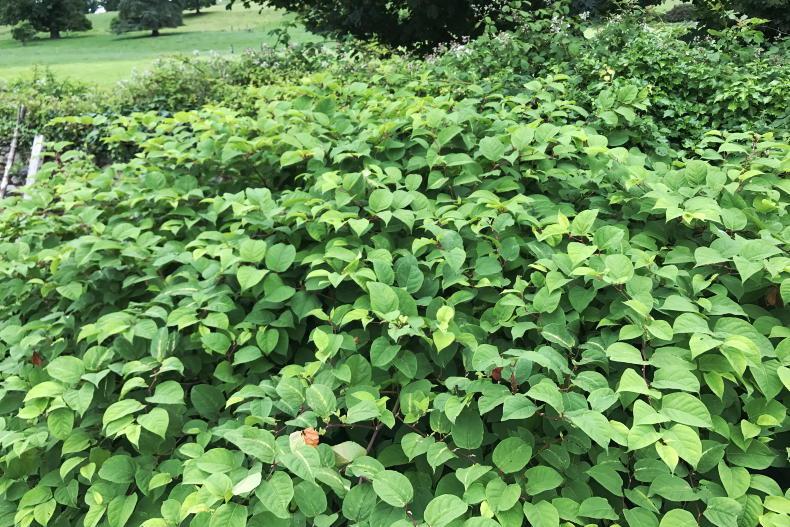More needs to be done at Ireland’s borders to prevent further invasive species entering the country, a Teagasc Signpost webinar has heard.
Invasive species engagement officer at the National Biodiversity Data Centre Kate Moore said there are currently no specific checks at entry points to Ireland for invasive species, putting Ireland behind other island nations in terms of controls.
“We don’t have specific checks for invasive species at our borders, I do think that’s something we are lacking. We don’t have the same measures that they have in New Zealand and Australia here.
“That is something we need to look into developing and see how we can do that,” she said.
Moore acknowledged that Ireland faces a different challenge than other island nations, as it is part of the European Union (EU), but said we can do more.
“It is difficult because we are part of the EU and we have open borders with fellow member states. So it’s a bit trickier in Ireland to have the same amount of checks.
“But we are an island here, technically it should be easier to keep these things out. We need to be doing more on our borders,” she added.
Japanese knotweed
On Japanese knotweed, an invasive species first introduced to Ireland in the 19th century as a garden plant, Moore warned that it should never be cut as this could spread it further.
“The most environmentally friendly way to treat knotweed is with herbicide, but this can take several years. It could take up to five years of treatment, depending on how big the infestation is.

On Japanese knotweed, an invasive species first introduced to Ireland in the 19th century as a garden plant, Moore warned that it should never be cut, as this could spread it further. \ Ramona Farrelly
“The alternative is excavation, so excavating the plant and all the soil material containing the roots, but this is very costly and disruptive to the environment,” Moore said.
Moore noted that you could require a licence from the National Parks and Wildlife Service (NPWS) to move the knotweed or contaminated soil.
Japanese knotweed - which can spread rapidly - can damage concrete, tarmac and other hard surfaces.
More needs to be done at Ireland’s borders to prevent further invasive species entering the country, a Teagasc Signpost webinar has heard.
Invasive species engagement officer at the National Biodiversity Data Centre Kate Moore said there are currently no specific checks at entry points to Ireland for invasive species, putting Ireland behind other island nations in terms of controls.
“We don’t have specific checks for invasive species at our borders, I do think that’s something we are lacking. We don’t have the same measures that they have in New Zealand and Australia here.
“That is something we need to look into developing and see how we can do that,” she said.
Moore acknowledged that Ireland faces a different challenge than other island nations, as it is part of the European Union (EU), but said we can do more.
“It is difficult because we are part of the EU and we have open borders with fellow member states. So it’s a bit trickier in Ireland to have the same amount of checks.
“But we are an island here, technically it should be easier to keep these things out. We need to be doing more on our borders,” she added.
Japanese knotweed
On Japanese knotweed, an invasive species first introduced to Ireland in the 19th century as a garden plant, Moore warned that it should never be cut as this could spread it further.
“The most environmentally friendly way to treat knotweed is with herbicide, but this can take several years. It could take up to five years of treatment, depending on how big the infestation is.

On Japanese knotweed, an invasive species first introduced to Ireland in the 19th century as a garden plant, Moore warned that it should never be cut, as this could spread it further. \ Ramona Farrelly
“The alternative is excavation, so excavating the plant and all the soil material containing the roots, but this is very costly and disruptive to the environment,” Moore said.
Moore noted that you could require a licence from the National Parks and Wildlife Service (NPWS) to move the knotweed or contaminated soil.
Japanese knotweed - which can spread rapidly - can damage concrete, tarmac and other hard surfaces.







 This is a subscriber-only article
This is a subscriber-only article









SHARING OPTIONS: